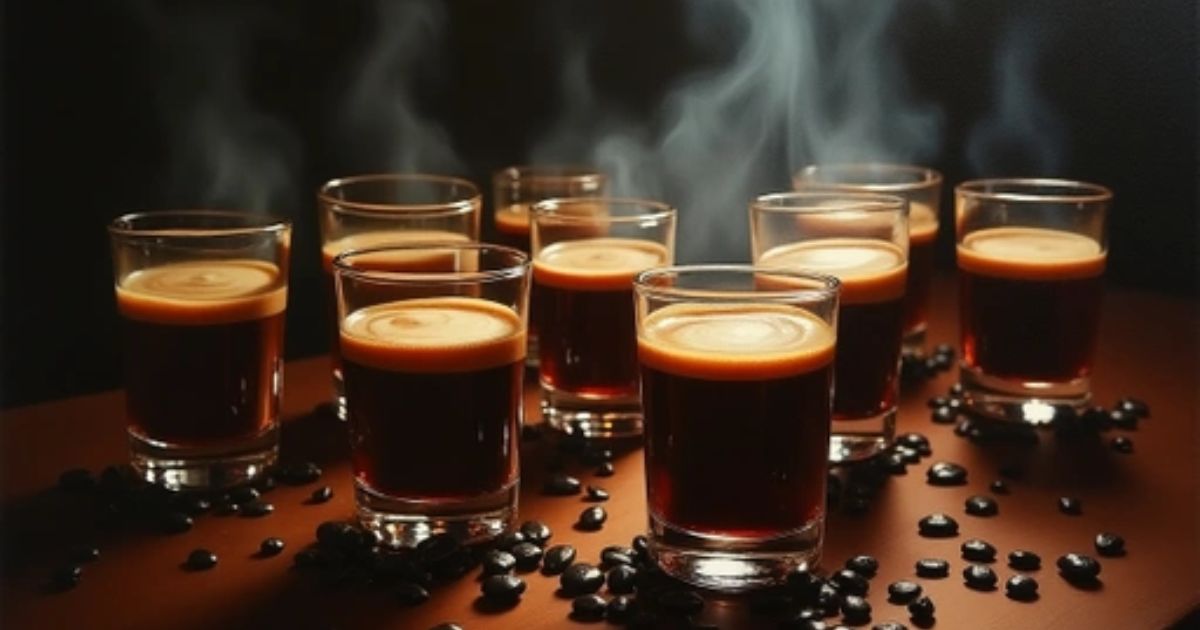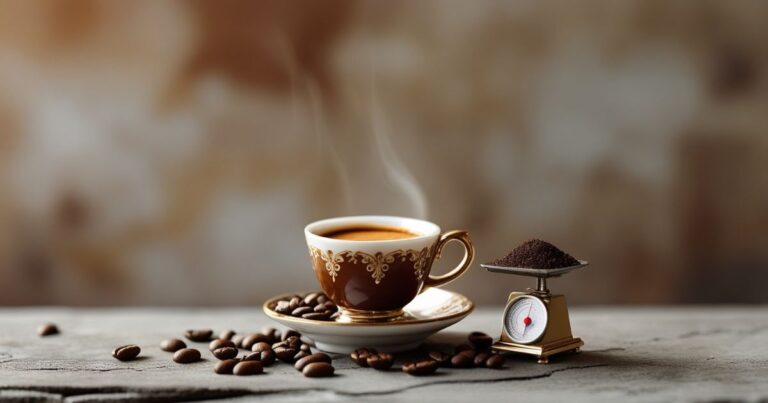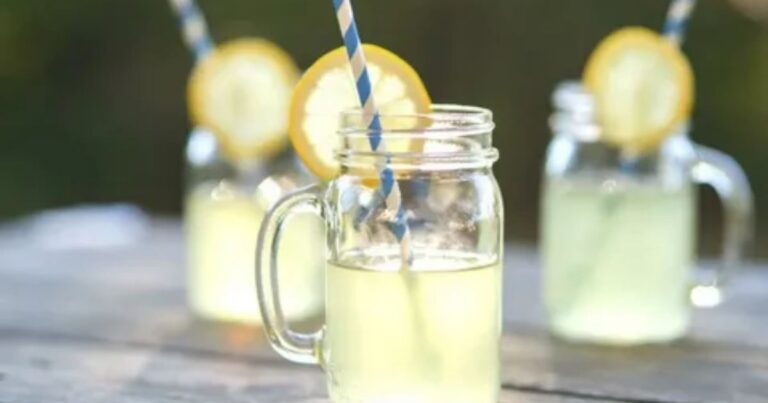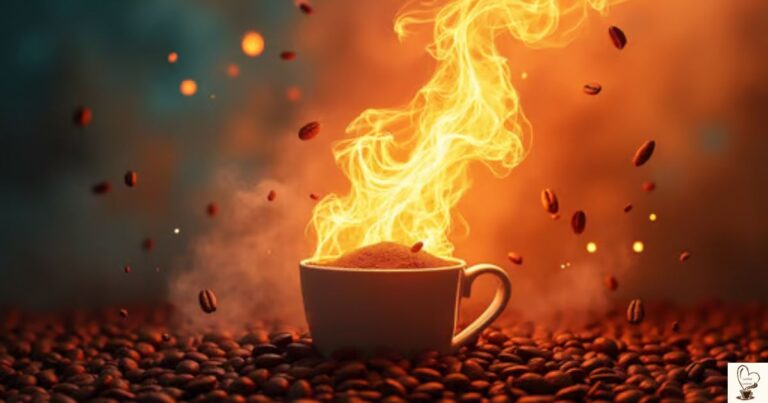How Much Caffeine is in a Latte? 2025’s Ultimate Breakdown
Think your latte is just a cozy, creamy treat? Think again! That smooth cup of frothy goodness hides more caffeine than you might expect. While it’s easy to assume that the milk dulls the punch, it’s actually the espresso shots that power up your latte.
How much caffeine is in a latte?A single shot of espresso contains around 63 mg of caffeine. Most of lattes made with two or more shots, you’re sipping down anywhere from 126 mg to more.
If you’re a latte lover or just curious, you’ll be amazed at how much caffeine you’re getting with each sip. Next time you order one, You will know that: it’s not just comforting—it’s a strong hit of energy too
What is a Latte?
A latte blends espresso with steamed milk, creating a smooth, creamy texture. Originating from Italian culture, it’s a traditional drink made with one-third espresso and two-thirds warm milk. The shots of espresso give the latte its boldness, while the milk adds a mellow balance.
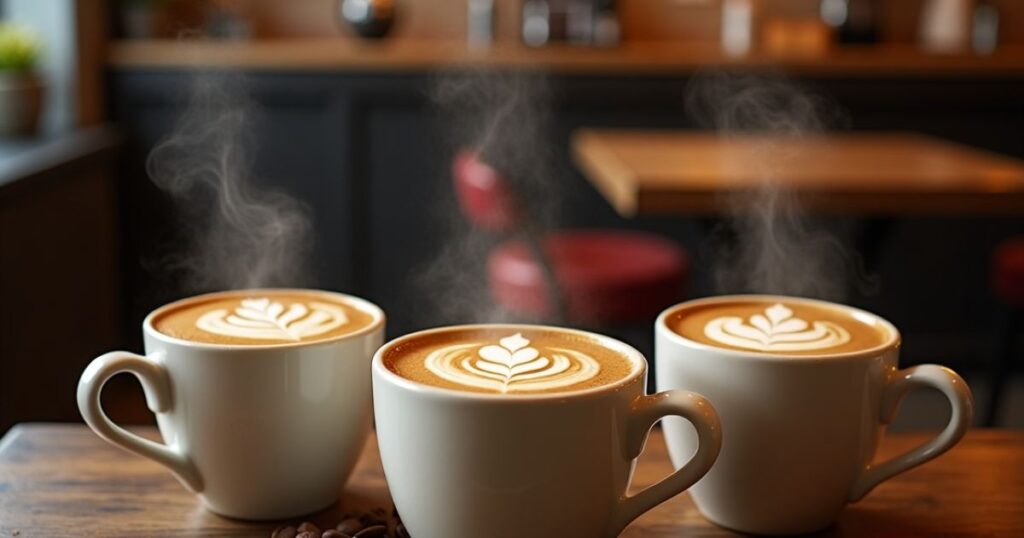
This drink’s intensity depends on the amounts of espresso used. A single shot of espresso provides around 63 milligrams of caffeine, making the latte caffeine content vary by the number of shots. Lattes are gentler than black coffee but stronger than regular milk-based drinks. Customize your kind of coffee to suit your taste.
What Is Caffeine?
Caffeine is a natural stimulant found in coffee, tea, and cacao. It works by boosting energy and improving focus. Many drinks and medications include it for its alertness effects.
Once consumed, caffeine quickly enters the bloodstream and gives you a temporary energy boost. This is why it’s so popular for mornings and busy days.
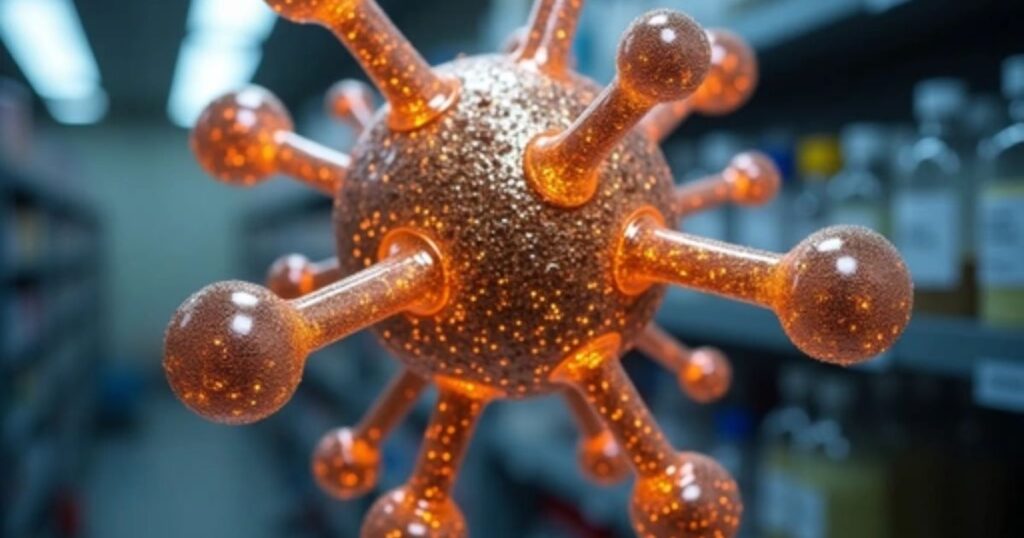
When it comes to coffee, espresso is one of the strongest sources of caffeine. Since a latte uses espresso as its base, it contains a notable amount of caffeine.
If you’re wondering how much caffeine is in a latte, it all depends on the number of espresso shots in your drink. Each shot adds to the overall caffeine content, making lattes a popular choice for those seeking an energy boost.
What Are the Effects of Caffeine on the Body?
Caffeine is a natural stimulant that affects the brain and nervous system. It helps people feel more alert and focused by blocking adenosine, a chemical that makes you feel tired. This is why many enjoy drinks like lattes to kick-start their day.
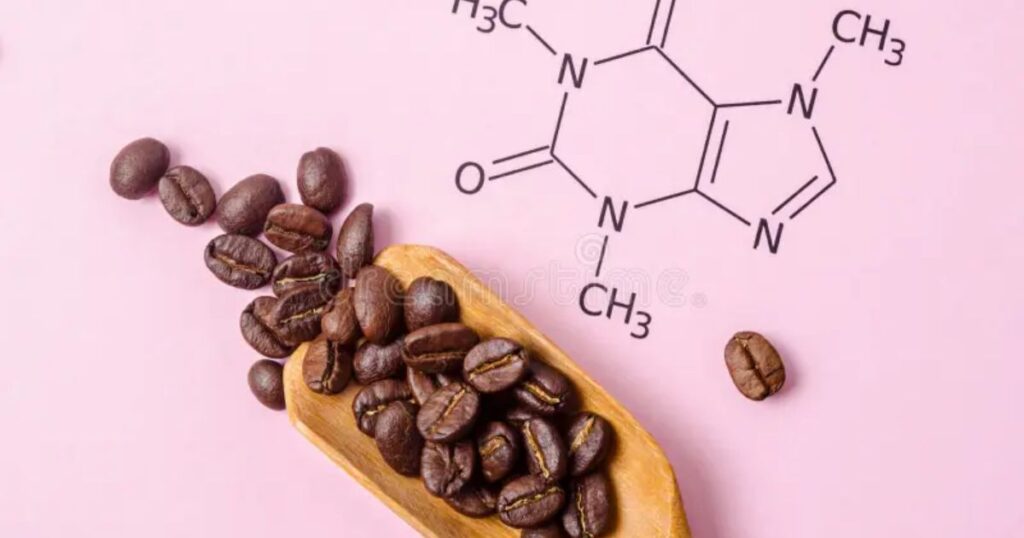
Understanding how much caffeine is in a latte is important, as it helps you manage how it impacts your body. Here are some possible effects of caffeine on our body;
1. Increased Alertness and Focus
Caffeine blocks adenosine, a neurotransmitter that makes you feel tired, helping you stay sharp and focused. Research shows that doses as low as 40 mg can improve attention and reaction time. A latte with 126 mg of caffeine can provide a significant boost in mental performance.
2. Boosted Energy Levels
Caffeine stimulates the central nervous system, giving you an energy surge within 15–30 minutes of consumption. This effect can last for several hours, depending on your tolerance and metabolism. A typical latte can power you through your morning or afternoon slump.
3. Enhanced Physical Performance
Studies reveal that caffeine can improve physical performance by up to 12%. It does this by increasing adrenaline levels, which prepares your body for intense activity. This is why athletes often consume caffeine before workouts.
4. Increased Heart Rate
Caffeine can temporarily raise your heart rate by 10–20 beats per minute. For most people, this is harmless, but those with heart conditions should monitor their intake. A latte’s caffeine content is enough to slightly elevate your pulse without causing significant effects.
5. Faster Metabolism
Caffeine boosts your metabolic rate by 3–11%, helping your body burn more calories. This is why it’s a common ingredient in weight-loss supplements. A latte not only satisfies your coffee cravings but also gives your metabolism a little nudge.
6. Jitters or Nervousness
Consuming more than 400 mg of caffeine per day can lead to side effects like jitters, anxiety, or shakiness. While a latte contains less caffeine, those sensitive to it may still experience mild nervousness.
7. Disrupted Sleep Patterns
Caffeine stays in your system for 4–6 hours, potentially affecting your ability to fall asleep. Drinking a latte late in the afternoon or evening can interfere with your sleep cycle, causing restlessness at night.
8. Potential Dependency
Regular caffeine consumption can lead to dependency. Withdrawal symptoms like headaches, fatigue, and irritability can occur within 12–24 hours of not consuming it. A latte drinker may feel these effects if they skip their usual cup.
9. Improved Mood
Caffeine increases dopamine production, the “feel-good” chemical in your brain. Studies show that moderate caffeine intake, such as in a latte, can reduce the risk of depression and boost overall mood.
10. Temporary Dehydration
Caffeine has mild diuretic properties, meaning it can increase urine production. While this doesn’t cause significant dehydration, it’s a good idea to drink water alongside your latte to stay hydrated.
How Much Caffeine is in a Latte? You Must Know
A latte is a popular coffee drink with a creamy texture. Its caffeine comes from the espresso shots used as the base. A single shot of espresso contains around 63 mg of caffeine. Most lattes include two shots, delivering about 126 mg of caffeine. This makes it a great choice for an energy boost during a busy day.
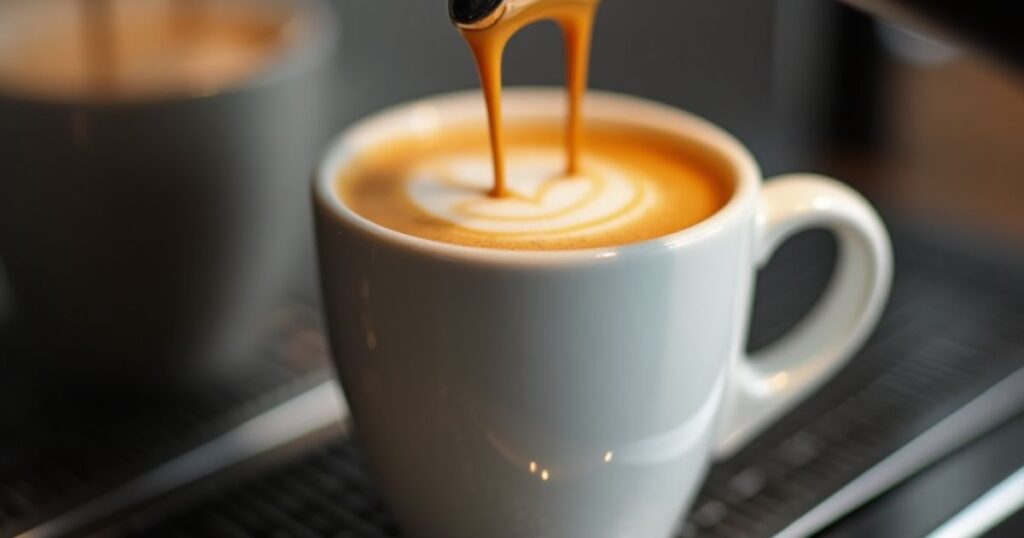
The caffeine level in a latte depends on the number of espresso shots. While it has less caffeine than black coffee, it’s still strong enough to keep you alert.
The steamed milk adds a smooth flavor without changing the caffeine content. A latte is perfect for those who enjoy a balanced mix of coffee strength and creamy texture.
How much caffeine in a latte Starbucks
If you’re a fan of Starbucks lattes like me, you might be surprised by how much caffeine is in each cup. A tall latte, with one shot of espresso, gives you 75 mg of caffeine—a nice, gentle boost.
Go for a grande, and you’re sipping on two shots with 150 mg. Feeling adventurous? The venti size, with three shots, packs a bold 225 mg of caffeine.
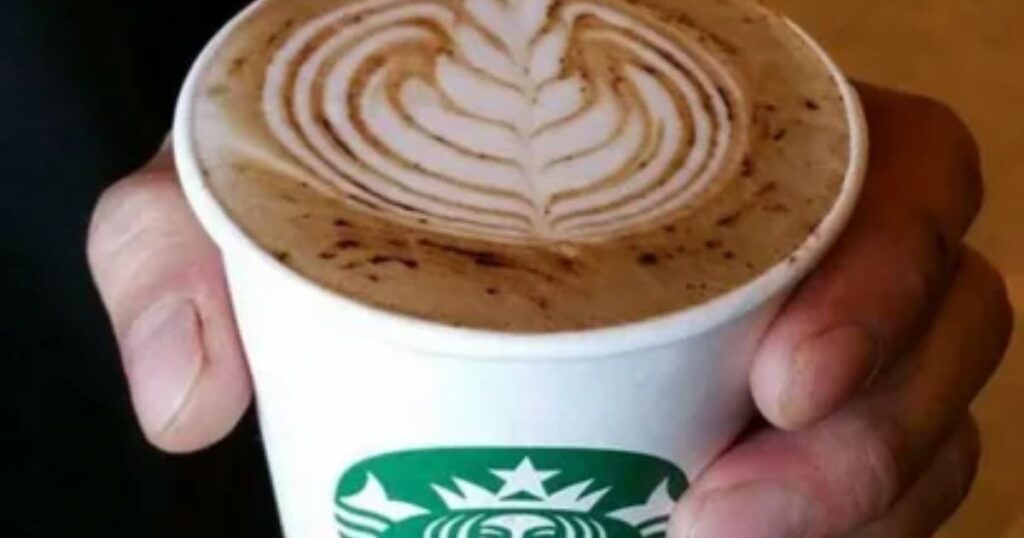
Each espresso shot adds its own punch to the smooth, creamy mix of milk and foam. I’ve found that knowing how much caffeine is in a latte helps me choose the size that matches my day.
Need a light lift or an energy surge? There’s a latte for that! Every sip feels like a comforting hug, but with a kick.
How much caffeine in a latte with milk
A latte with milk may taste smooth, but it’s packed with caffeine. The caffeine comes from the espresso shots. A single shot has about 63 mg of caffeine. Most lattes use two shots, giving you around 126 mg of caffeine. The milk adds creaminess.

The steamed milk may make it taste mild, but the caffeine content remains strong.The balance of espresso and milk makes lattes a favorite for many coffee lovers. This makes lattes both energizing and delicious, offering a boost that feels like a treat.
Factors Affecting Caffeine Content in Latte
lattes are popular for their rich flavor and smooth texture, but they also pack a decent caffeine punch. A short (8 oz) latte at Starbucks contains about 75 mg of caffeine with a single shot of espresso.
Larger sizes, like a grande (16 oz), typically come with two shots, delivering 150 mg of caffeine. The caffeine levels can vary slightly depending on customizations, like adding extra espresso shots.
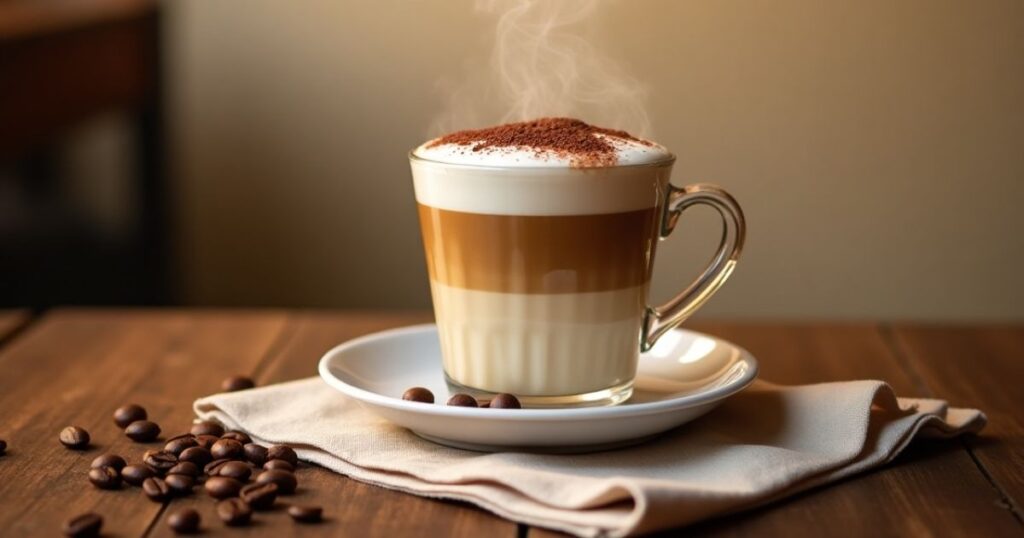
For those wondering how much caffeine is in a latte, Starbucks provides one of the clearest comparisons. The milk in the drink doesn’t lower the caffeine content—it just balances the taste.
Customizing your order with extra espresso or decaf options lets you control your caffeine intake. Keep an eye on the number of shots to match your energy needs.
1. Number of Espresso Shots
The number of espresso shots is the biggest factor in determining caffeine content. A single shot of espresso typically contains 63 mg of caffeine. Most small or medium-sized lattes come with two shots, providing 126 mg of caffeine.
For larger sizes like 16 or 20 oz, lattes often include three or even four shots, pushing the caffeine content to 189-252 mg. Specialty drinks, like a triple-shot caramel latte, can deliver an even stronger caffeine punch.
2. Types of Beans
The type of coffee bean used in the espresso has a huge impact. Robusta beans, commonly used in high-intensity blends, have almost twice the caffeine content of Arabica beans.
Arabica beans, on the other hand, are smoother and more common in premium lattes but contain less caffeine. If your coffee shop uses a Robusta-heavy blend, your latte could deliver a much stronger buzz.
3. Latte Size
The size of your latte matters more than you think. A small 8 oz latte typically contains one or two shots of espresso, while medium and large sizes (12 oz and 16 oz) often come with two to three shots.
Extra-large lattes, like those offered in 20 oz cups, can contain four or more shots. Larger sizes aren’t just more filling—they also pack significantly more caffeine.
4. Customization Options
Many coffee shops allow customers to personalize their drinks. Adding extra shots of espresso or ordering a “red-eye” latte (espresso mixed with brewed coffee) can dramatically increase the caffeine content.
Choosing a decaf or half-caf option, however, reduces caffeine while still providing the flavor of a classic latte.
5. Milk to Espresso Ratio
A standard latte typically uses one-third espresso, two-thirds steamed milk, and a small layer of microfoam. While the milk doesn’t lower the caffeine, it balances the flavor and makes the drink feel smoother.
The variations like a “flat white,” which has less milk and more espresso, contain more caffeine per ounce than a traditional latte.
6. Specialty Recipes
Some specialty lattes, like a “bulletproof latte” made with espresso, butter, and coconut oil, can vary in caffeine content depending on the recipe. Seasonal drinks, like pumpkin spice or holiday-themed lattes, often follow the same rules but may include extra espresso shots to enhance flavor.
7. Brewing Methods
Lattes are made using espresso as their base, created by forcing near-boiling water through finely-ground coffee beans under high pressure. This process is done with an espresso machine.
To make a latte, about one-third espresso is mixed with two-thirds steamed milk, topped off with a thin layer of microfoam for a smooth finish.
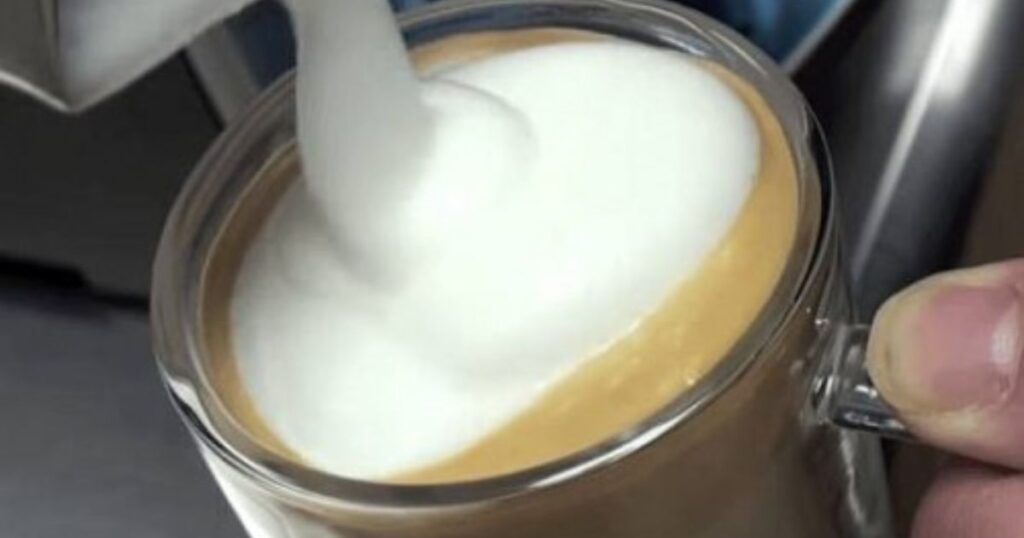
The caffeine in your latte largely depends on how many shots of espresso are used. A single shot contains about 63 mg of caffeine, while a double shot bumps it up to 126 mg.
Many coffee shops even offer triple or extra shots for those who need an even bigger boost. If you’re someone who loves strong coffee, customizing your latte with extra shots can easily increase its energy kick.
Comparison of Caffeine Content of Latte to Other Drinks
Lattes have a moderate amount of caffeine compared to other popular coffee drinks. Knowing how much caffeine is in a latte helps compare it to other coffee choices and pick the right drink for your energy needs.

1. Soda: Sugary and Mild
Popular sodas like cola typically have 30–40 mg of caffeine per can. While they provide a small boost, they rely more on sugar than caffeine for energy. Compared to a latte, soda’s caffeine content is much weaker and less effective for staying alert.
2. Tea: Soothing and Balanced
A cup of black tea has around 40–70 mg of caffeine, depending on the brew. It’s gentler on the system compared to a latte but provides a steady energy boost. Green tea has even less caffeine, about 20–50 mg per cup, making it a calming alternative.
3. Energy Drinks: Packed with a Punch
Energy drinks contain 80–200 mg of caffeine per can, often higher than a latte. However, they also include sugar and artificial stimulants, making their energy burst short-lived and sometimes overwhelming. Lattes offer a more natural and sustained boost.
4. Brewed Coffee: Classic and Lighter
Brewed coffee offers about 95 mg of caffeine per cup. It’s less intense than a latte and doesn’t include milk. This makes it a simple, straightforward choice for coffee lovers.
5. Americano: Bold and Strong
An Americano has a similar caffeine content to a latte with two shots of espresso. However, it’s diluted with hot water instead of milk. This gives it a bold flavor without the creaminess.
6. Cappuccino: Foam-Filled Energy
A cappuccino also contains around 126 mg of caffeine. It uses the same espresso base as a latte but with less milk and more foam. The texture is lighter, and the taste is stronger.
7. Espresso: Small but Powerful
Espresso is the most concentrated option, with 63 mg of caffeine per shot. It’s served in a tiny cup, delivering a quick and intense caffeine hit. Perfect for a fast energy boost.
8. Cold Drinks: Refreshing but Weaker
Most cold drinks like iced tea or flavored iced coffee contain less caffeine than a latte. For example, a standard iced tea has about 30–50 mg of caffeine per serving, far lower than a latte’s 126 mg. Sweetened cold drinks are refreshing but offer minimal energy compared to coffee.
What Are the Health Risks of Consuming Too Much Caffeine?
It’s important to know how much caffeine is in a latte to avoid going over the recommended daily limit of 400 mg for most adults. Too much caffeine can lead to health problems, especially for regular coffee drinkers.
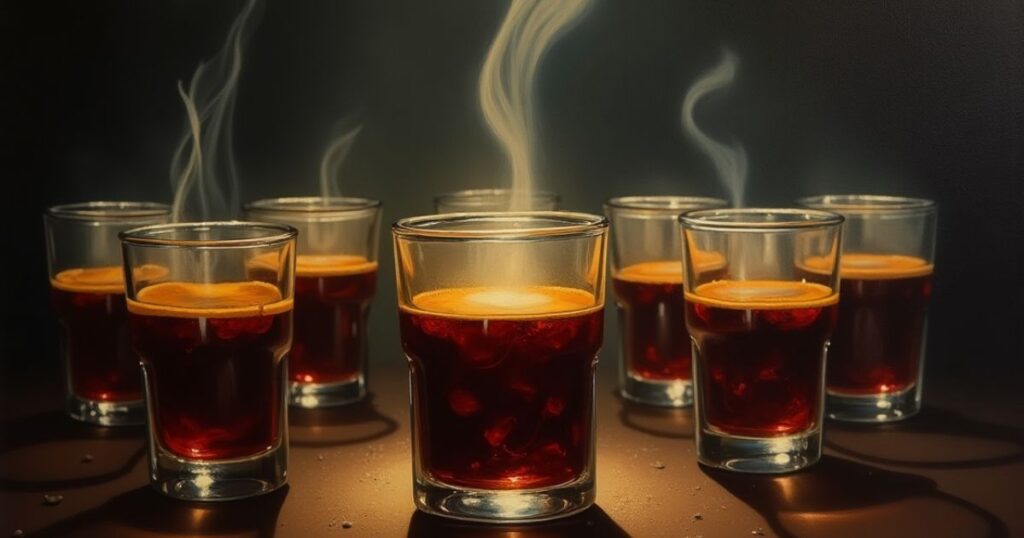
Consuming large amounts can cause restlessness, trouble sleeping, and an increased heart rate.
1. Jitters, Restlessness, and Anxiety
Excessive caffeine can leave you feeling jittery or restless, making it hard to relax. High caffeine intake can also trigger feelings of anxiety or nervousness, especially for those sensitive to its effects. A latte, depending on how much caffeine is in a latte, might seem harmless, but multiple servings could lead to these issues.
2. Sleep Disruption and Heart Palpitations
Caffeine stays in your system for hours, and drinking too much can interfere with your sleep cycle. This can leave you feeling exhausted the next day, creating a cycle of dependency. The caffeine in a latte can also temporarily increase your heart rate, causing palpitations or an irregular heartbeat in some people.
3. Digestive Issues and Headaches
Overloading on caffeine may irritate your stomach, leading to acid reflux or digestive discomfort. It can also act as a diuretic, causing dehydration if you don’t drink enough water. For regular coffee drinkers, skipping your daily caffeine fix can result in withdrawal headaches, showing how dependent your body can become.
4. Increased Blood Pressure and Dependency
Consuming too much caffeine can cause a temporary spike in blood pressure. While this isn’t dangerous for everyone, it’s a concern for those with hypertension. Over time, regular high intake can lead to dependency, where you may need more caffeine to feel the same effects, making it harder to cut back.
Knowing how much caffeine is in a latte can help you avoid these risks.
How Many Lattes Can You Drink In A Day?
The FDA recommends a daily caffeine intake of up to 400 milligrams for most adults to consume safely. This means that having around three double-shot lattes in a day is generally considered okay, depending on the specific caffeine content of your drink.
It’s important to pay attention to your body and avoid exceeding the recommended daily limit of caffeine to prevent these issues.
How to Limit Your Caffeine Intake from Lattes?
Here are some simple changes that can help you enjoy your favorite drink without overloading with caffeine.
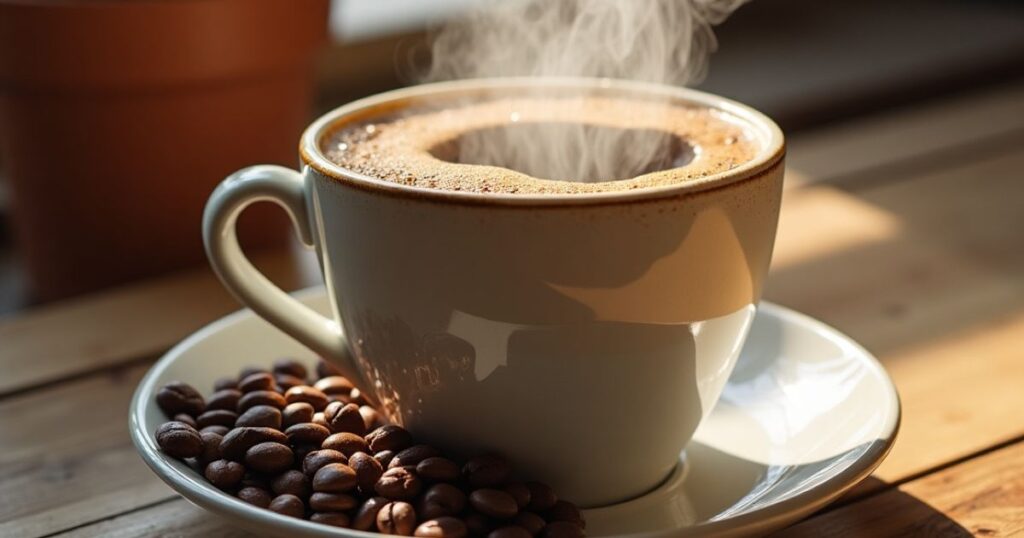
1. Switch to Decaf Latte
In a latte, the base coffee is typically made from regular coffee beans, although some prefer a decaf latte to avoid caffeine, especially if they’re worried about late-night sleep.
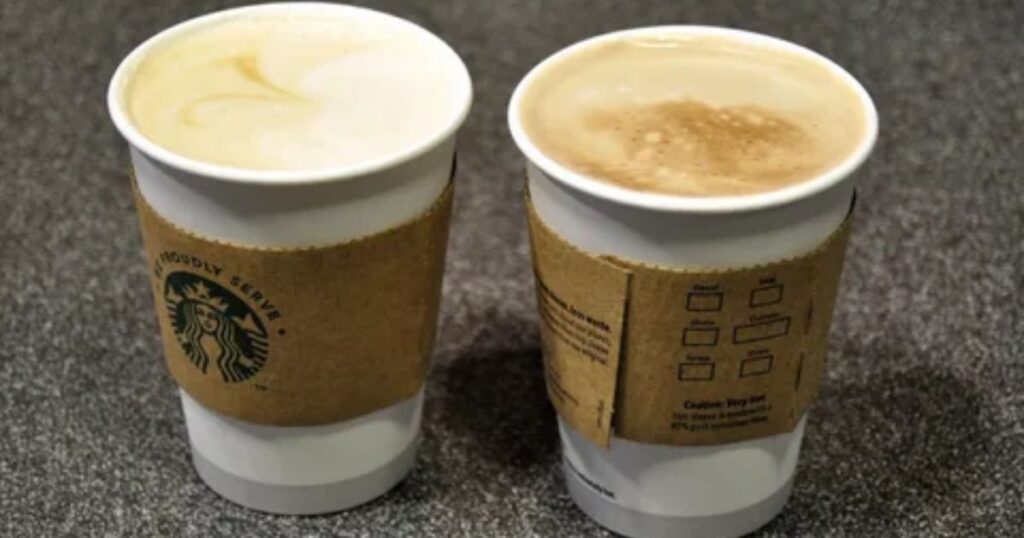
While decaf sometimes gets a bad rap, many high-quality coffee shop brands offer decaf made with careful decaffeinating methods, such as the Swiss Process, ensuring a tasty and smooth experience without compromising flavor.
2. Choose Smaller Sizes
The size of your latte greatly affects its caffeine content. A tall latte usually contains one shot of espresso, while a grande or venti has two or more. By opting for a smaller size, you can enjoy your drink with less caffeine and still satisfy your craving for a creamy, comforting beverage.
4. Alternate with Herbal Teas
Herbal teas are naturally caffeine-free and can be a refreshing replacement for your usual latte. By alternating between a latte and a cup of herbal tea, you can enjoy variety and reduce your overall caffeine intake throughout the day.
5. Try Milk Alternatives Without Espresso
If you love the creamy texture of a latte, consider ordering a steamed milk drink without espresso. Many coffee shops offer flavored steamed milk options that replicate the comfort of a latte but without any caffeine at all.
How Much Caffeine is in a Latte: Final Thoughts
Tracking your caffeine consumption is a good idea to avoid too much. If you’re wondering how much caffeine is in a latte, a double-shot typically contains 128 milligrams of caffeine, which is about a third of the safe daily limit for most adults.
A single-shot latte has 64 milligrams, making it a bit easier to manage. For those looking to cut back, a decaf latte offers nearly zero caffeine, which could be a good option if you’re sensitive to the effects of caffeine. Expect to adjust based on how much you consume throughout the day to ensure it stays within a healthy range.
FAQs
How Much Caffeine is in a Latte vs Coffee?
A traditional 8-ounce cup of brewed coffee contains about 95 mg of caffeine. In comparison, an 8-ounce latte has approximately 63 mg of caffeine.
This difference is due to the higher coffee-to-milk ratio in brewed coffee.
How Much Caffeine is in a 12oz Latte?
A 12oz latte contains about 63 to 126 milligrams of caffeine.
The exact amount depends on the number of espresso shots used.
Typically, a 12oz latte has one to two shots of espresso.
Is a Latte Healthier Than Coffee?
Lattes are generally less healthy than black coffee.
They contain more calories and fat due to the added milk.
Black coffee, on the other hand, is low in calories and fat-free.
Is Latte a Strong Coffee?
Lattes have a milder flavor compared to regular coffee.
This is because they contain more milk, which dilutes the espresso.
In contrast, black coffee has a bolder and stronger taste.
What are the Disadvantages of Coffee Lattes?
Drinking too many coffee lattes can cause anxiety and restlessness.
They may also lead to insomnia due to caffeine’s stimulating effects.
Additionally, excessive intake can increase heart rate and blood pressure.
How Much Latte is too Much?
Consuming more than 4 cups of caffeinated coffee daily is considered excessive.This includes the equivalent amount of caffeine found in lattes.
Exceeding this limit may lead to health issues like anxiety and insomnia.

